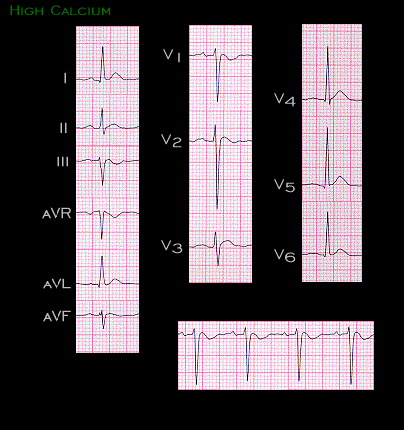
This is the electrocardiogram of hypercalcemia. It is from a 36 year old woman with breast cancer and boney metastasis. Her serum calcium level was elevated to 13 mg/dl. Note that the QT interval is shortened to 0.30 seconds (300ms). This is due to the almost total loss of the ST segment, a reflection of the shortening of the action potential plateau caused by the increase in extracellular calcium. The P wave, PR interval, QRS complex and T waves are unaffected. In the setting of even more profound hypercalcemia, prolongation of the PR interval and of the QRS complex have been reported.
